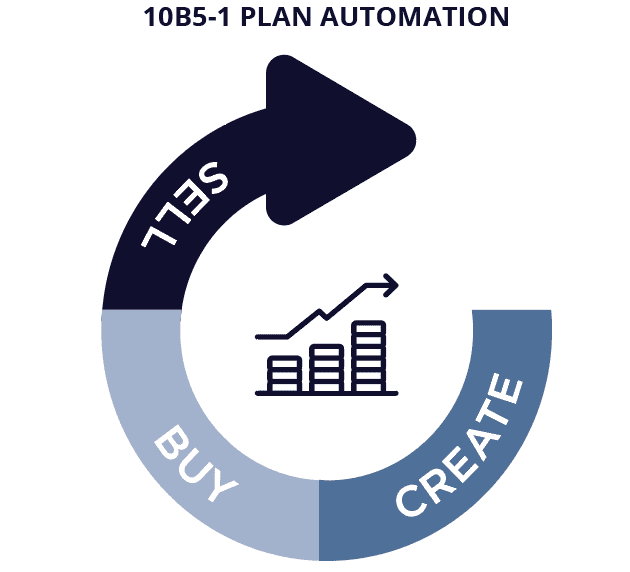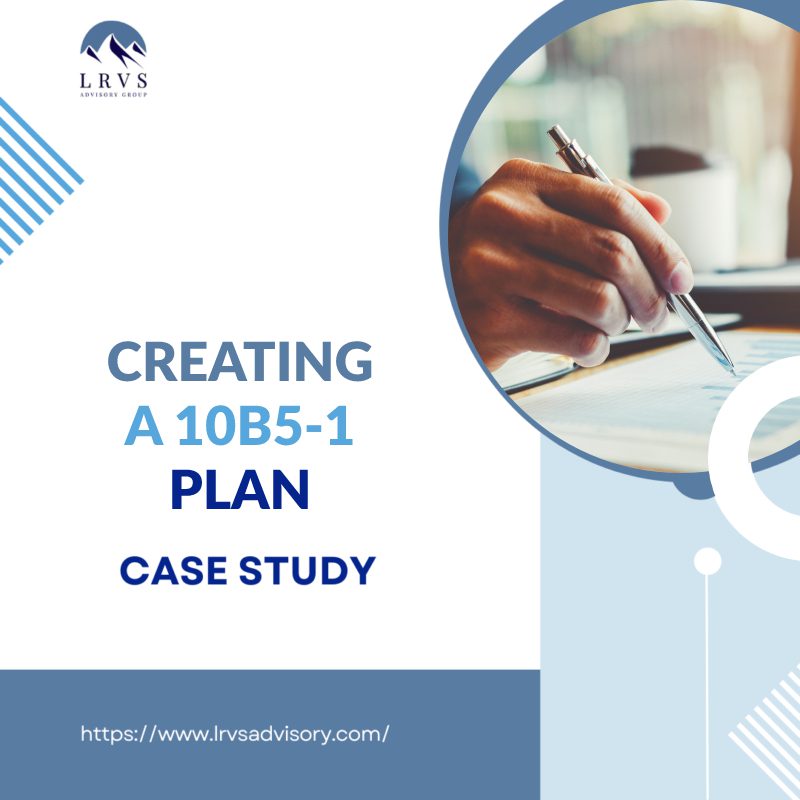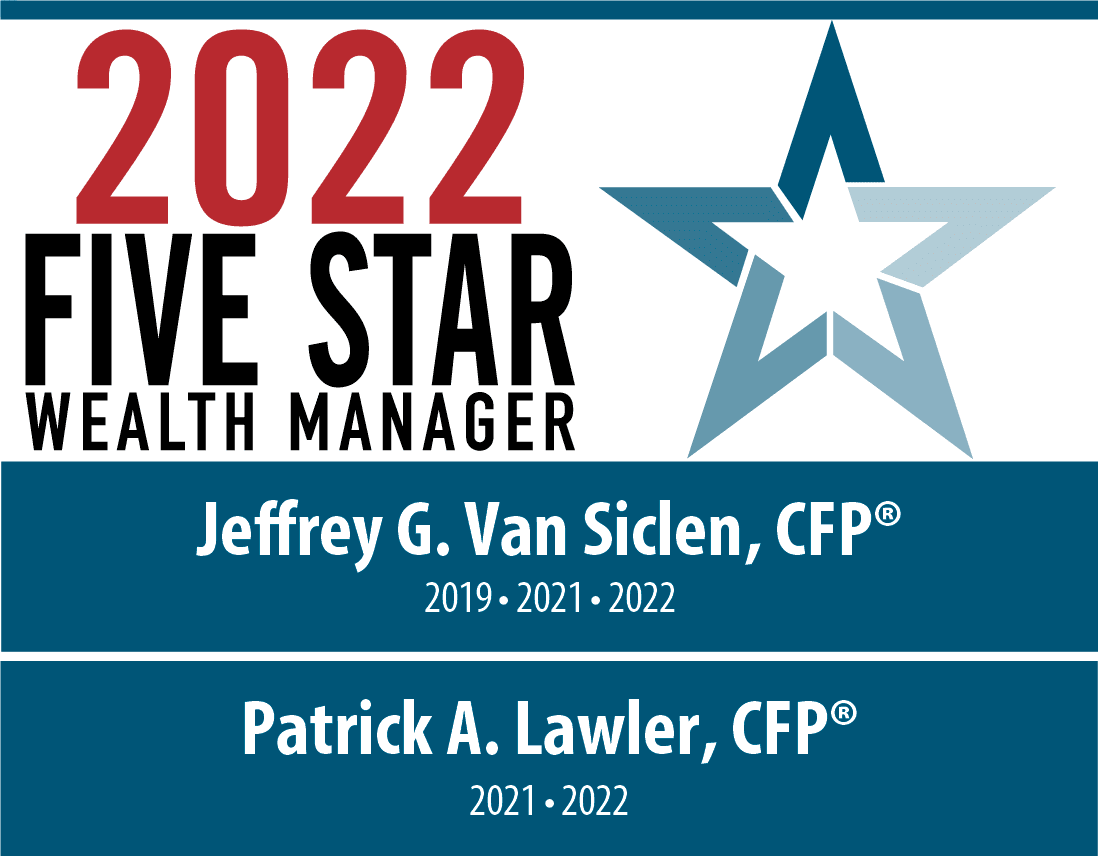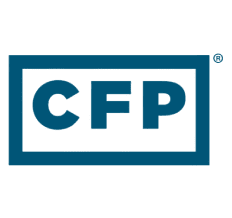The Client
LRVS specializes in wealth management for executives and professionals in Biotech and Life Sciences. In this case study, a couple in their mid-30’s, both work for small biotech companies in the greater Boston area engaged LRVS advisors to help with their investment planning. The husband and wife duo both max out their 401(k) and save monthly for retirement and their child’s college fund.
Combined, the couple makes a total of $440,000 per year. While the wife works for a company that went public before she accepted her role, the husband works for a company that went public with an IPO while he was an employee there, and he was granted a hefty amount of stock prior to the Initial Public Offering (pre-IPO).
Due to the husband’s role in the biotech firm and the information he is privy to, he is required to sign a contract that only allows him to trade his stock during certain times of the year.
The Dilemma
Granted a bunch of stock pre-IPO for a company that exceeds expectations in the stock price sounds great, right? Yes, however, with all that newfound money comes the potential for significantly higher tax consequences. Non-Qualified Options (NQO) or Incentive Stock Options (ISO) liquidated immediately trigger income tax versus a more favorable long-term Capital Gains tax.
Along with the potential tax implications, around 70% of the client’s overall portfolio was in the husband’s company’s stock, creating a lack of diversification and increasing risk in the portfolio. Lastly, because of his role and insider knowledge the client must utilize an executive trading plan or 10B5-1 plan to dispose of his options.
A 10B5-1 plan allows employees to structure their sales in a few ways, but most commonly as a pre-determined prices and points in time utilizing Limit Orders and target dates typically around the stock’s vesting schedule and client’s tax bracket.
The Approach
To minimize the tax burden and avoid ordinary income tax on the ISO’s the client was granted prior to the Initial Public Offering (pre-IPO) LRVS Advisory Group took a three-step approach. First, the advisor requested pre-clearance to trade Employee Stock Purchasing Plan (ESPP), vested Restricted Stock Units (RSU) and Non-Qualified Options, which is money that has either already been taxed at income rates or would be regardless of the action taken.
The advisor then traded enough shares to exercise and purchase the Incentive Stock Options (ISO) at a low price compared to what the stock was valued at, this also needed pre-clearance to buy. Once the client owned the shares, originating as ISO’s bought at the low price, the advisor implemented a 10B5-1 plan to begin selling 12 months from our purchase date.
By properly designing a 10B5-1 plan LRVS can ensure that the client utilizes incentive stock options to create qualifying dispositions and potentially only pay long-term capital gains tax versus ordinary income tax. In addition to the 10B5-1 plan, the advisor began diversifying the client’s overall portfolio to reduce the concentrated stock position – more diversification in his portfolio will continue to occur as the stock plan hits target prices. The team opened a college savings account for his child to separate where that money would be coming from. Lastly, the client began saving into a cash value life insurance policy to create a potential tax-free savings vehicle.*

The Outcome
By carefully and properly designing a 10B5-1 plan, the client potentially will save a significant amount in taxes throughout the execution of the plan. With the changes the advisor made to the couples 401(K) plans, the couple confidence in their savings goals. The LRVS Advisory Group will continue to reevaluate the couple’s 401(K) plans, stock plans, and outside investments to ensure we are unleashing the potential and maximizing growth while minimizing risk. It is important to note, while being subject to Alternative Minimum Tax (AMT), the advisor was still able to potentially save the client a significant amount in taxes utilizing our strategy
Lastly, by investing in an indexed universal life insurance policy, the couple created a potential tax-free savings vehicle* for retirement either for an unforeseen expense or for planned income. These strategies combined will provide these clients a custom direction for reaching their goals.
Talking to a financial professional about all of your retirement assets is the first step toward creating a simplified, consolidated and advanced financial plan.

Creating a 10B5-Plan Case Study.
Creating a 10B5-1 Plan Case Study
*Past performance does not guarantee future results and your results will vary.
**Hypothetical performance results have been provided for general comparison purposes only. Past performance may not be indicative of future results. Different types of investments involve varying degrees of risk. Therefore, it should not be assumed that future performance of any specific investment or investment strategy will be profitable or equal to the corresponding indicated performance level(s).
***This article is provided by McAdam LLC dba LRVS Advisory Group for informational purposes only. Investing involves the risk of loss and investors should be prepared to bear potential losses. Past performance may not be indicative of future results and may have been impacted by events and economic conditions that will not prevail in the future. No portion of this article is to be construed as a solicitation to buy or sell a security or the provision of personalized investment, tax, or legal advice. Certain information contained in this report is derived from sources that McAdam believes to be reliable; however, the Firm does not guarantee the accuracy or timeliness of such information and assumes no liability for any resulting damages.
†McAdam LLC dba LRVS Advisory Group is an SEC registered investment adviser that maintains a principal place of business in the State of Pennsylvania. The Firm may only transact business in those states in which it is notice filed or qualifies for a corresponding exemption from such requirements. For information about McAdam LLC dba LRVS Advisory Group registration status and business operations, please consult the Firm’s Form ADV disclosure documents, the most recent versions of which are available on the SEC’s Investment Adviser Public Disclosure website at www.adviserinfo.sec.gov.
††This hypothetical case study is provided for illustrative purposes only and does not represent nor is it intended to represent actual client experiences but is rather an amalgam of several clients. An individual’s experience may vary based on his or her individual circumstances. There can be no assurance that McAdam, LLC (“McAdam”) will be able to achieve similar results in comparable situations. No portion of these writings is to be interpreted as a testimonial or endorsement of McAdam’s investment advisory services and it is not known whether the hypothetical clients referenced approve of McAdam or its services, nor are these writings intended to imply the Firm’s strategies will be successful. The information contained herein should not be construed as personalized investment advice. Past performance is no guarantee of future results. There is no guarantee that the views and opinions expressed in this article will come to pass. Investing in the stock market involves gains and losses and may not be suitable for all investors. Information presented herein is subject to change without notice and should not be considered as a solicitation to buy or sell any security. For additional information about McAdam, including fees and services, send our disclosure statement as set forth on Form ADV from McAdam using the contact information herein. Please read the disclosure statement carefully before you invest or send money.






